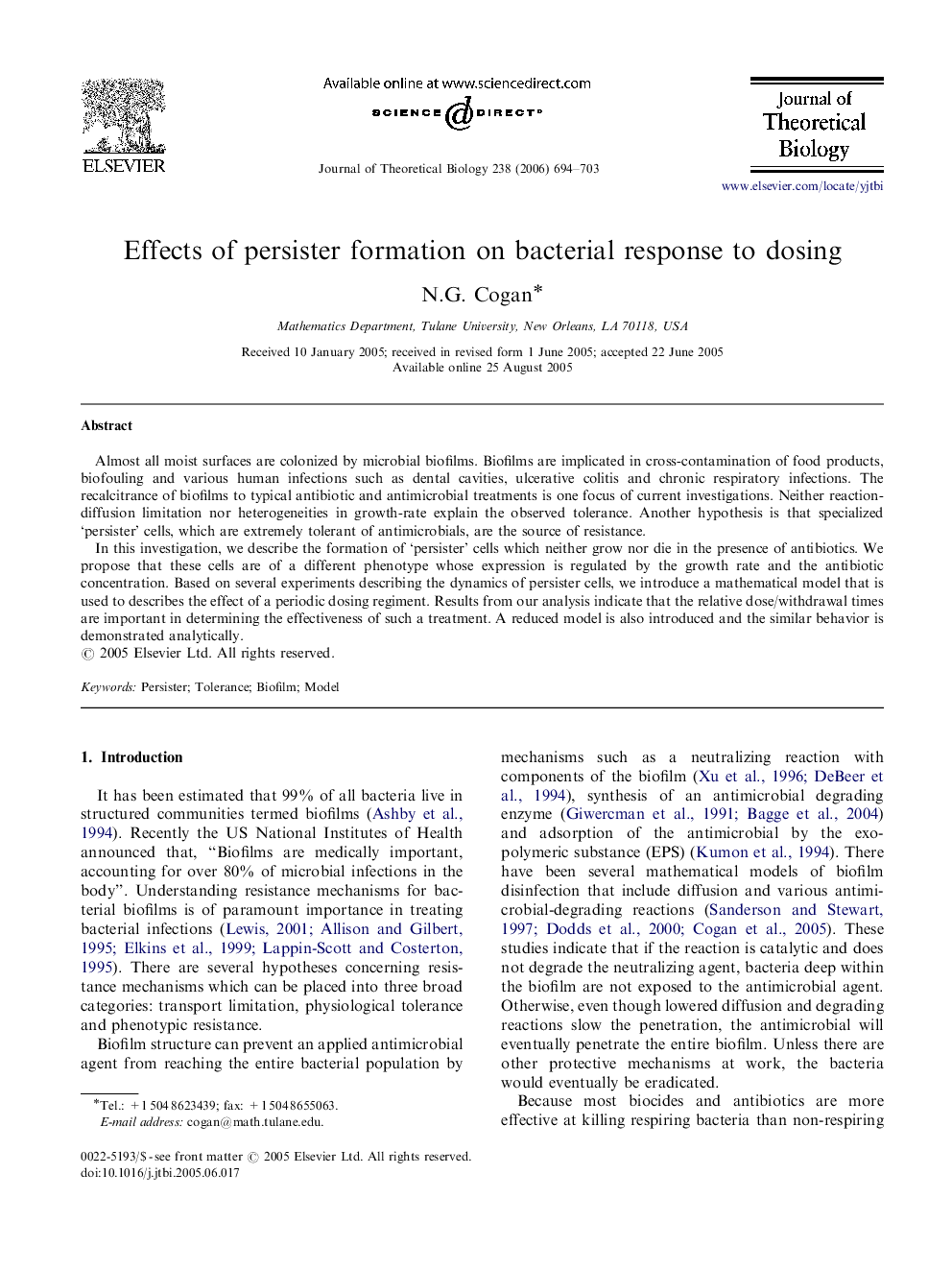| Article ID | Journal | Published Year | Pages | File Type |
|---|---|---|---|---|
| 4499763 | Journal of Theoretical Biology | 2006 | 10 Pages |
Almost all moist surfaces are colonized by microbial biofilms. Biofilms are implicated in cross-contamination of food products, biofouling and various human infections such as dental cavities, ulcerative colitis and chronic respiratory infections. The recalcitrance of biofilms to typical antibiotic and antimicrobial treatments is one focus of current investigations. Neither reaction-diffusion limitation nor heterogeneities in growth-rate explain the observed tolerance. Another hypothesis is that specialized ‘persister’ cells, which are extremely tolerant of antimicrobials, are the source of resistance.In this investigation, we describe the formation of ‘persister’ cells which neither grow nor die in the presence of antibiotics. We propose that these cells are of a different phenotype whose expression is regulated by the growth rate and the antibiotic concentration. Based on several experiments describing the dynamics of persister cells, we introduce a mathematical model that is used to describes the effect of a periodic dosing regiment. Results from our analysis indicate that the relative dose/withdrawal times are important in determining the effectiveness of such a treatment. A reduced model is also introduced and the similar behavior is demonstrated analytically.
